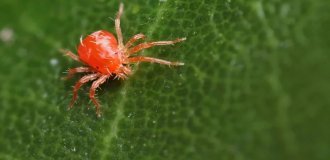Giant insects, the sight of which is breathtaking (13 photos)
When we think of insects, bugs, creepy spiders, we usually imagine them small. Well, they're small, aren't they? On the in fact, some insects are much larger than we think. 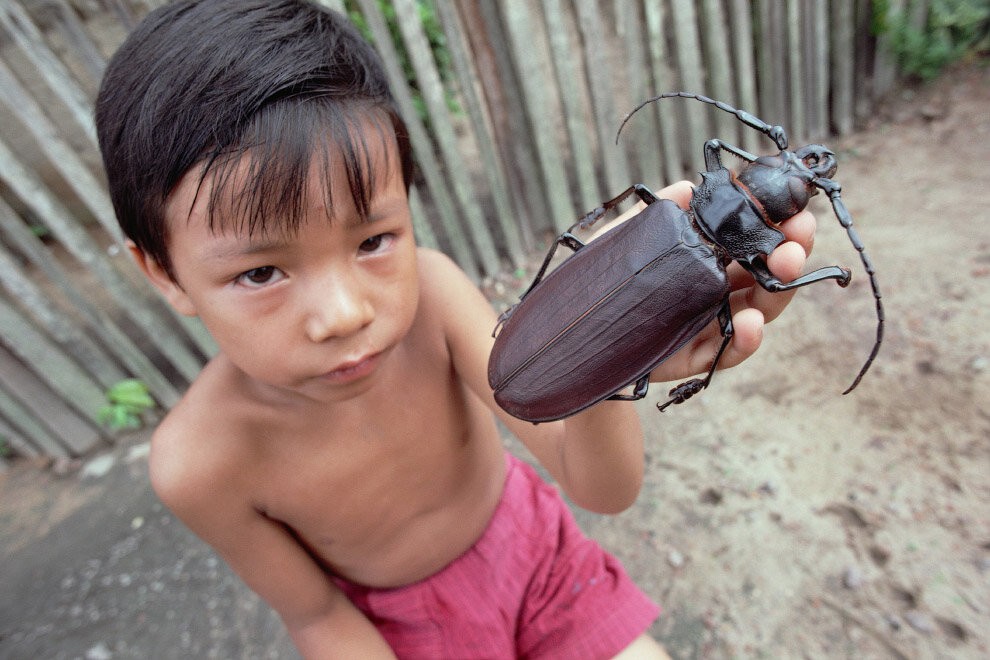
And some of them are big enough to cause SERIOUS Problems! So, here are the 11 largest insects discovered.
Giant African snail Achatina 
The giant snail Achatina is the largest terrestrial clam. Since the end of the 18th century, these huge (up to 30cm) creatures have been widely spread throughout the tropical and subtropical latitudes of the planet. On the African continent, as well as in the forests of Southeast Asia, where these African snails now live after they were brought here, these gastropods live on tree trunks.
Usually, where Achatina appears, people begin to experience difficulties with it, or rather, with its extermination. All this is because the snail truly all-devouring and archi-rapidly multiplying. Incidentally, in the US the snail is considered a national disaster, because one fine moment these creatures have multiplied so much in one of the states that they have eaten almost everything that got in their way - bark on trees, crops and even plaster on houses (snails need calcium to build shells). For this reason people who breed Achatina in the United States face a prison sentence.
goliath beetle 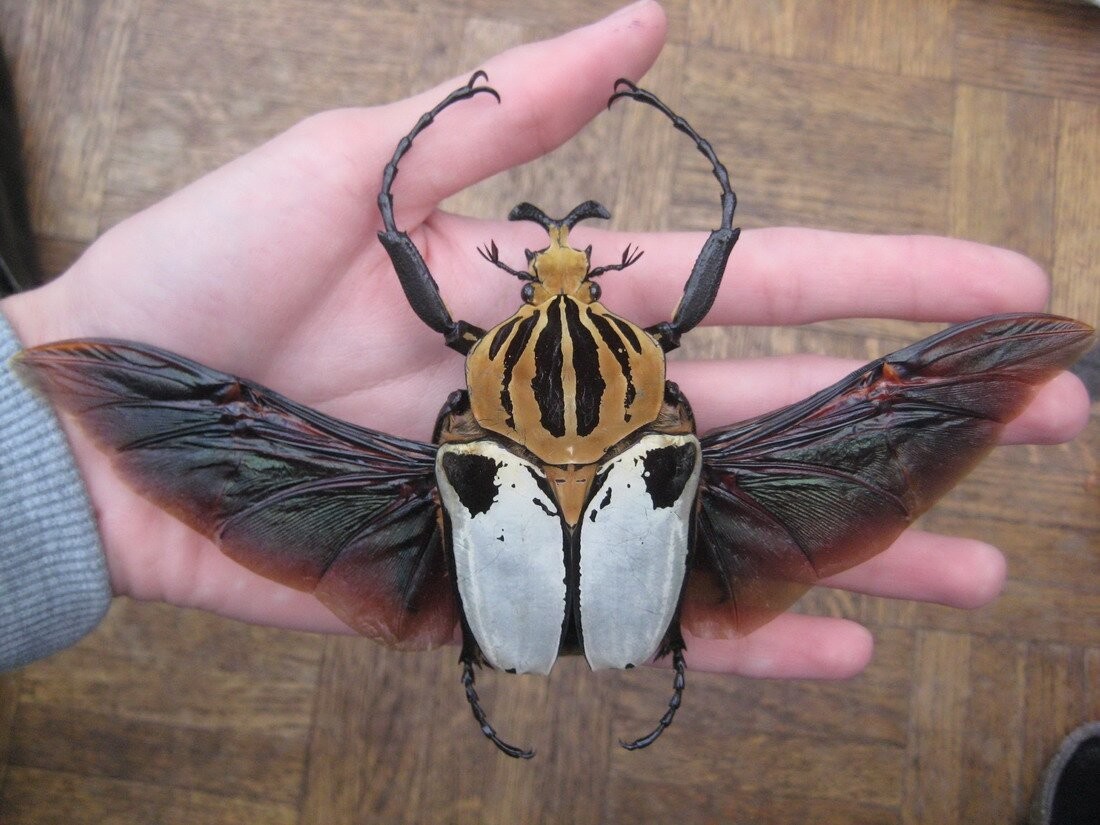
The giant goliath beetle is the largest and heaviest insect planet, named after the mythical giant Goliath. Inhabitant of Central and Southeast Africa, goliath beetle indeed gigantic size. The body length reaches 100-110 mm, width - 60 mm, and even more impressive is the weight of this insect. Males can weigh up to 100 grams, females are significantly smaller and lighter.
The goliath beetle spends all its time under the bark of trees. FROM trees, it descends during the mating season. Horn-like outgrowths on the head insects serve as a weapon in the fight for the female, as well as in defending rights to the territory. In females, such horns have a different shape and used as a shovel for building egg cradles. After fertilization, the female lays eggs in the ground. She digs the ground a special shield located on the head. It helps her securely hide future offspring. Immediately after the completed mission, the female returns to the tree.
Caterpillar of Citheronia regalis 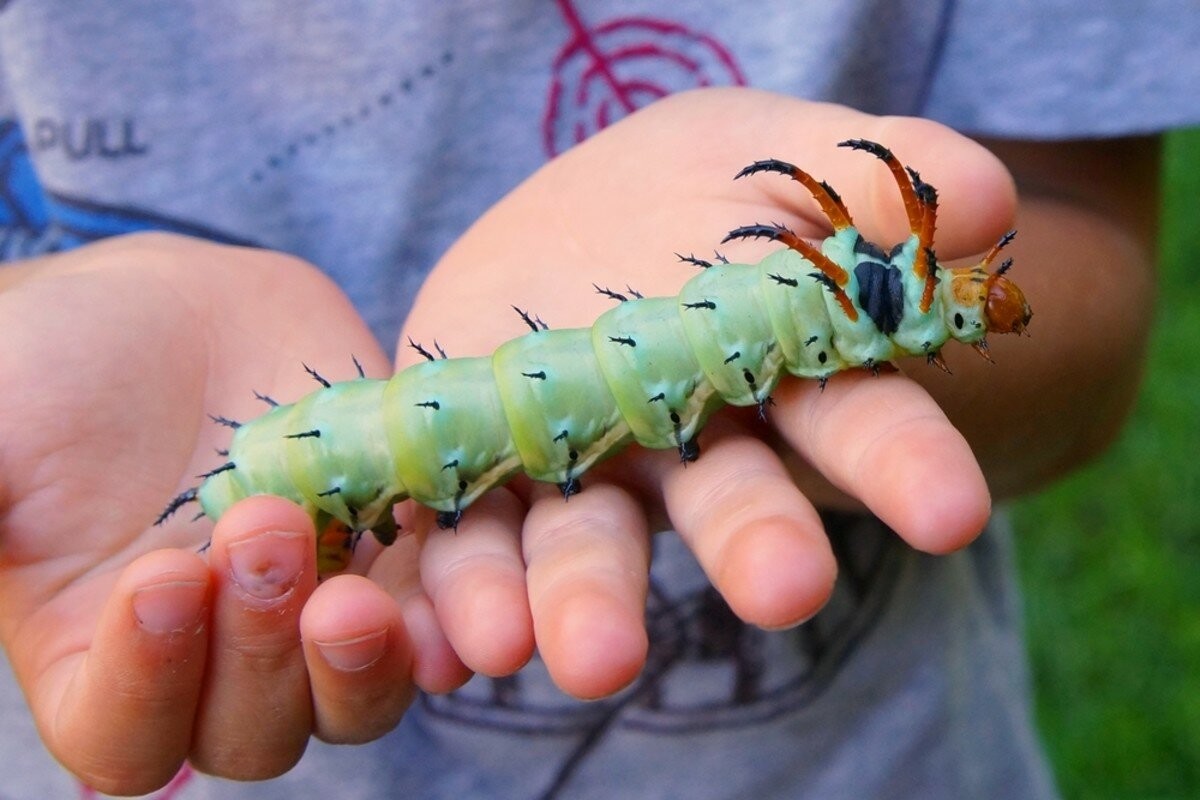
The title of the largest caterpillar in the world rightfully claims species called Citheronia regalis. Cytheronia royal or the king nut moth is indeed a giant, since the length the body of the caterpillar reaches 15 centimeters! Moreover, the insect itself looks quite frightening: his body is completely covered with short spikes, and the head is decorated with 4 pairs of long horns that make the creature look like on the dragon. This is probably why the royal citeronia is also called "horned devil hickory".
However, despite its intimidating appearance, which necessary for an insect to scare away predators, royal citeronia is not poses no danger to humans. Moreover, this caterpillar cannot be found in our region, since it lives only in the South Africa. It is interesting that this caterpillar by the end of summer turns into a very a beautiful moth with a wingspan of up to 16 centimeters.
giant wetta 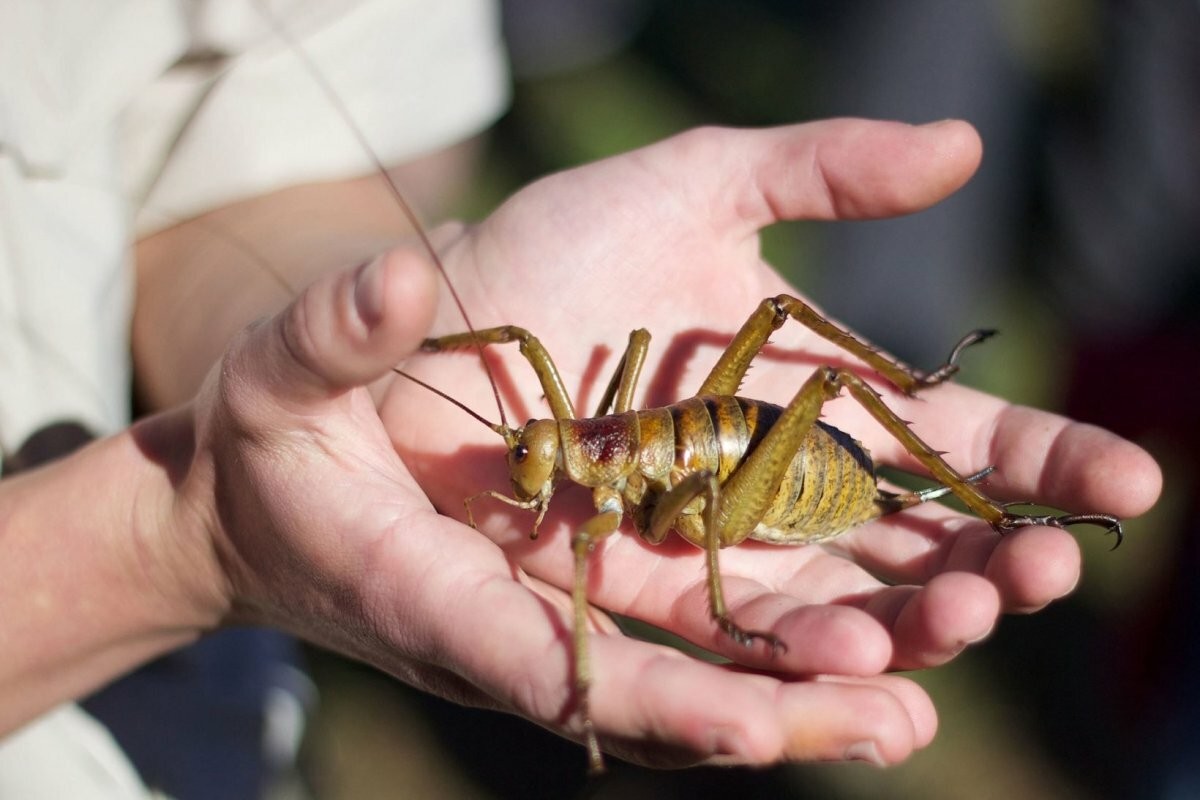
Ueta lives only in New Zealand on the island of Little Barrier. An unusual name was given to our heroine by the indigenous Maori people. Animal the natives called it wetapunga, which means "the god of ugly creatures." Scientific generic name Deinacrida heteracantha translated from Greek less offensively, "terrible grasshopper." This "bug" is in the top 10 the largest and heaviest insects in the world. On average, individuals weigh 20-30 g, but pregnant females, in general, like human ones, increase in Almost double in size! The body length of the arthropod giant is 10 cm, and this is without taking into account the legs, which still account for at least 3-4 cm!
Ueta feeds on both its arthropod counterparts and plant foods: fruits, leaves, flowers. Despite the external resemblance to locusts, the insect is extremely useful for the ecology of the New Zealand. Following a vegan diet, the ueta spreads the seeds of local plants, thereby spreading them.
tarantula hawk 
In English, these wasps are called tarantula hawks, "tarantula hawks": with hawkish zeal, they pounce on their victims - tarantula spiders, in English called tarantula. Let's start with that they number more than 100 thousand species, most of them live on the tropical belt and a couple of species inhabit in the subtropics. During the breeding season, the female tarantula hawk flies for hours low above the ground or runs around it in search of a particular the target is a tarantula spider.
If the spider is caught in the open, the fight escalates into fierce battle. The tarantula is much stronger than the wasp: it is armed with two poisonous mandibles and eight tenacious legs. But nevertheless, the wasp wins more often, thrusting a sting into his abdomen, where the nerve centers are located. Later a few seconds the spider is paralyzed. After this wasp drags the spider into its hole or to your shelter. The wasp then lays an egg on the abdomen of the spider, which will become food for the future wasp.
Rhino cockroach 
The rhinoceros cockroach, or giant burrowing cockroach, is one of the the largest representatives of cockroaches. It grows in length up to 80-100 mm and weighs 25-35 g. In natural habitats, they were caught several specimens weighing up to 50 g Giant burrowing cockroaches live in northeastern Australia. Insects live mainly in eucalyptus groves growing on sandy soils. Insects live in underground shelters that they dig themselves at a depth of 15-30 cm, maximum 1 m. Shelters are usually located under a layer of leaves or deadwood. They also serve as their main food.
Rhinoceros cockroaches are social insects. They live in colonies which may be several hundred individuals. Mothers tremblingly take care of their offspring up to 3-4 years. In the event of their death, care for the growing generations are taken over by the sexually mature females next to them.
giant water bug 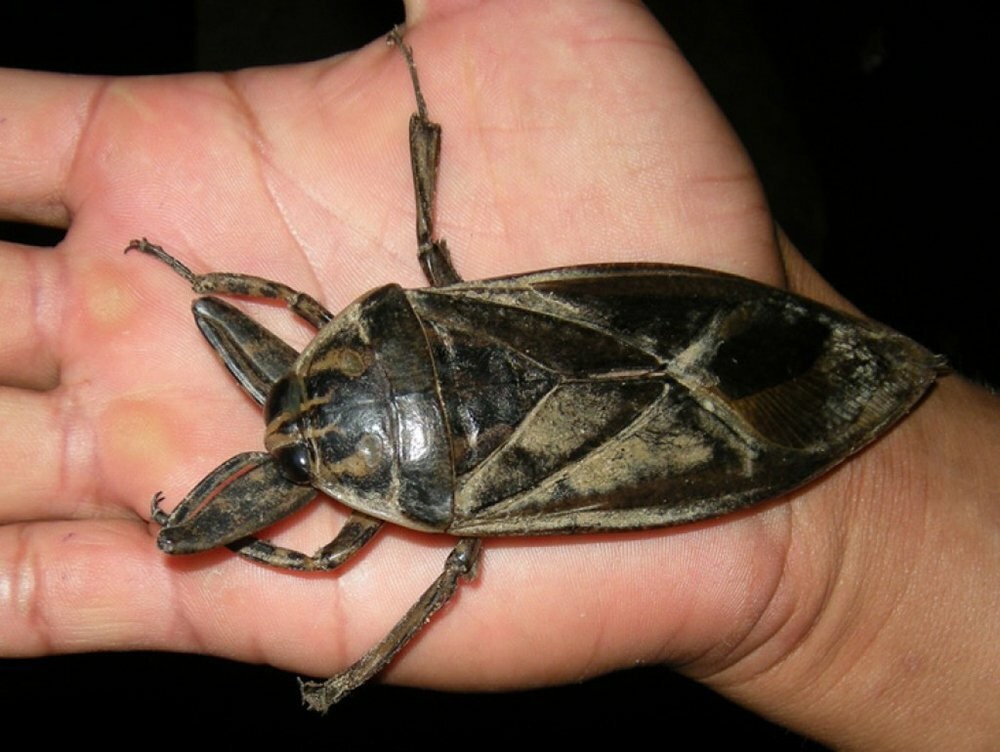
Water bugs are found in freshwater ponds in the North and South America, Africa and Asia. In total, there are about 170 species of these insects. Giant water bugs range in size from 1 centimeter up to an impressive 12 centimeters. These amazing insects seem creepy because they feed on fish, snakes, turtles and even little ducks. But they are also ruthless predators, prey on insects and pests dangerous to humans. 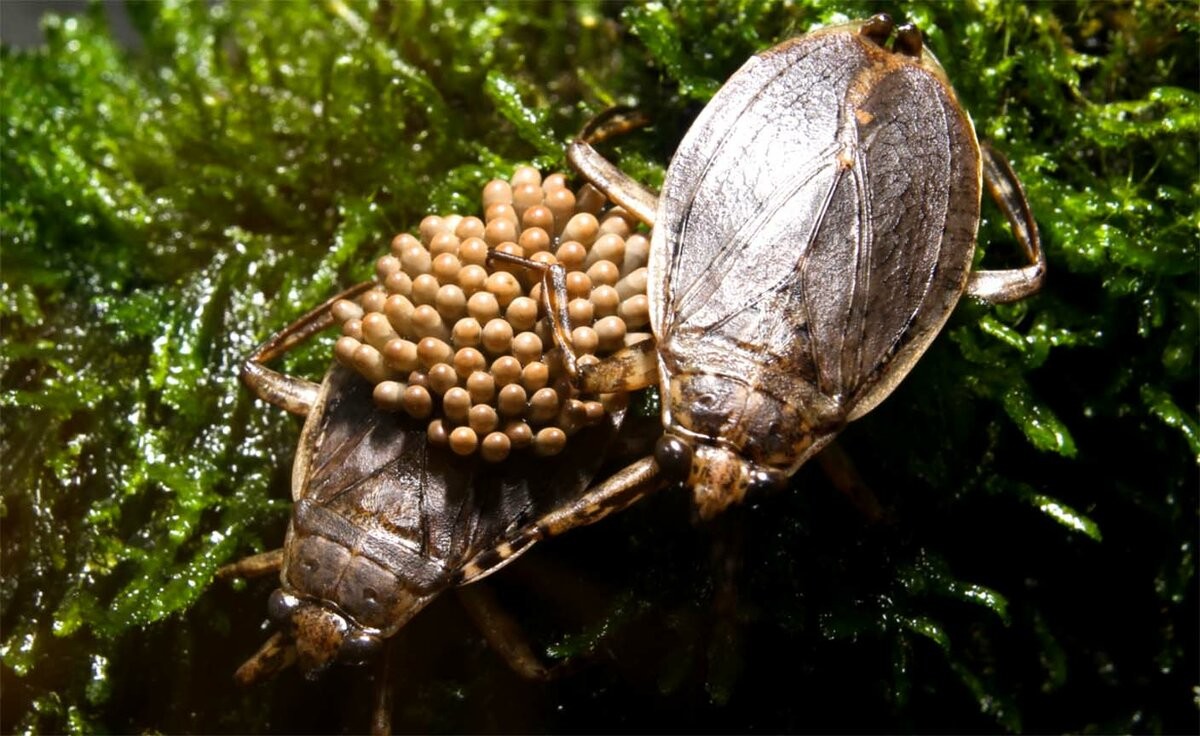
The very method of hunting used by bedbugs is interesting. They are are located on plants in water so that the surface remains dorsal tube through which the insect breathes air. Next bedbug takes a wait-and-see attitude. As soon as next to him floats anything, the insect rushes to attack. Firmly holding a water bug victim pierces it with his proboscis-like mouth and injects enzymes that digest it from within. After that, the beetles suck "nutritious soup" from the victim.
tree lobster 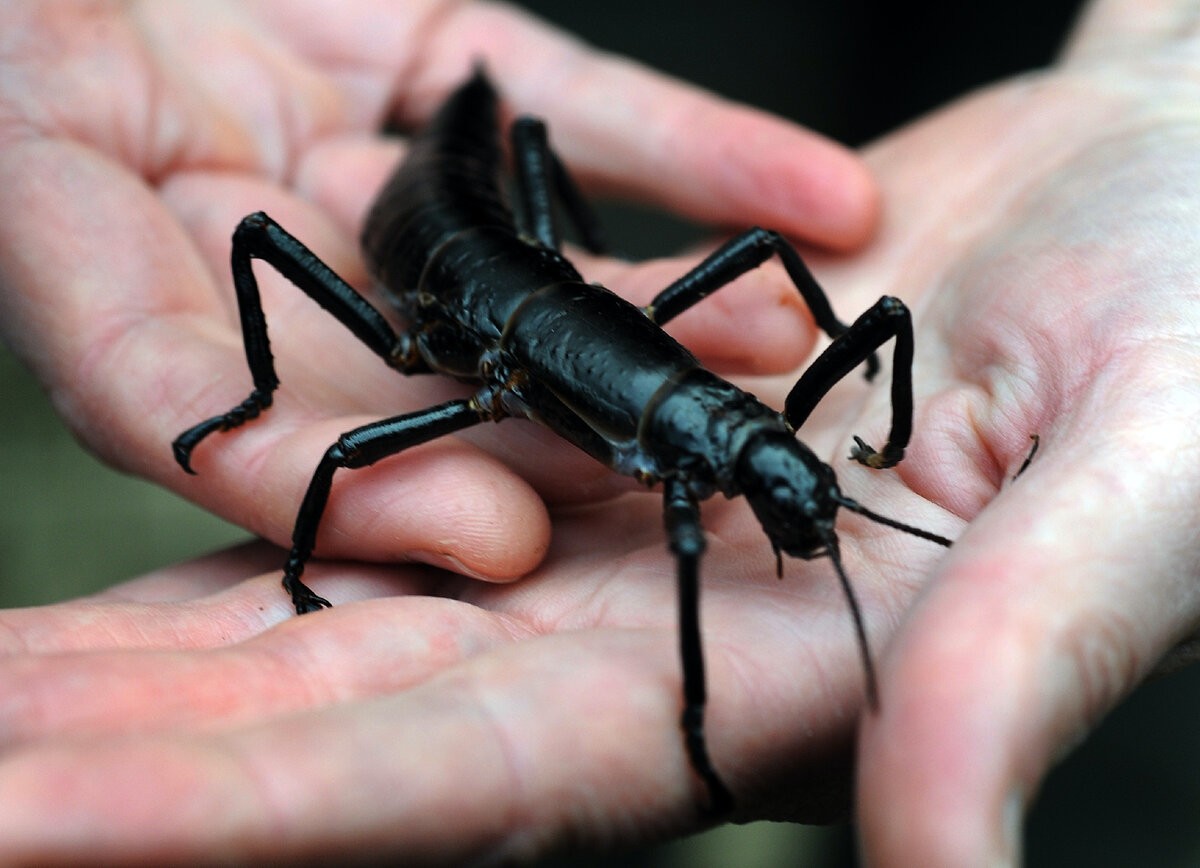
For a long time it was believed that these individuals became extinct, scientists around the world were looking for representatives of this class all over the world. Lucky Australian naturalists who discovered a tree lobster on a volcanic rock Ball's Pyramid off the coast of Australia. It was there that they found holes, whose tenants were tree lobsters, or stick insects.
Stick insects are quite long and thin individuals, reach a length of 12-15 cm with a width of 1.5-2 cm. The tree lobster has no wings, but it is very moves quickly. During the day, the insect hides in a hole, and crawls out at night. out. It is characteristic of them that individuals create permanent pairs. females before the start of the drought, they lay eggs that ripen for a very long time. Six months later, larvae appear, but many of them die due to drought. A female can lay eggs without a male, but then the offspring will be only females.
Tenodera sinensis 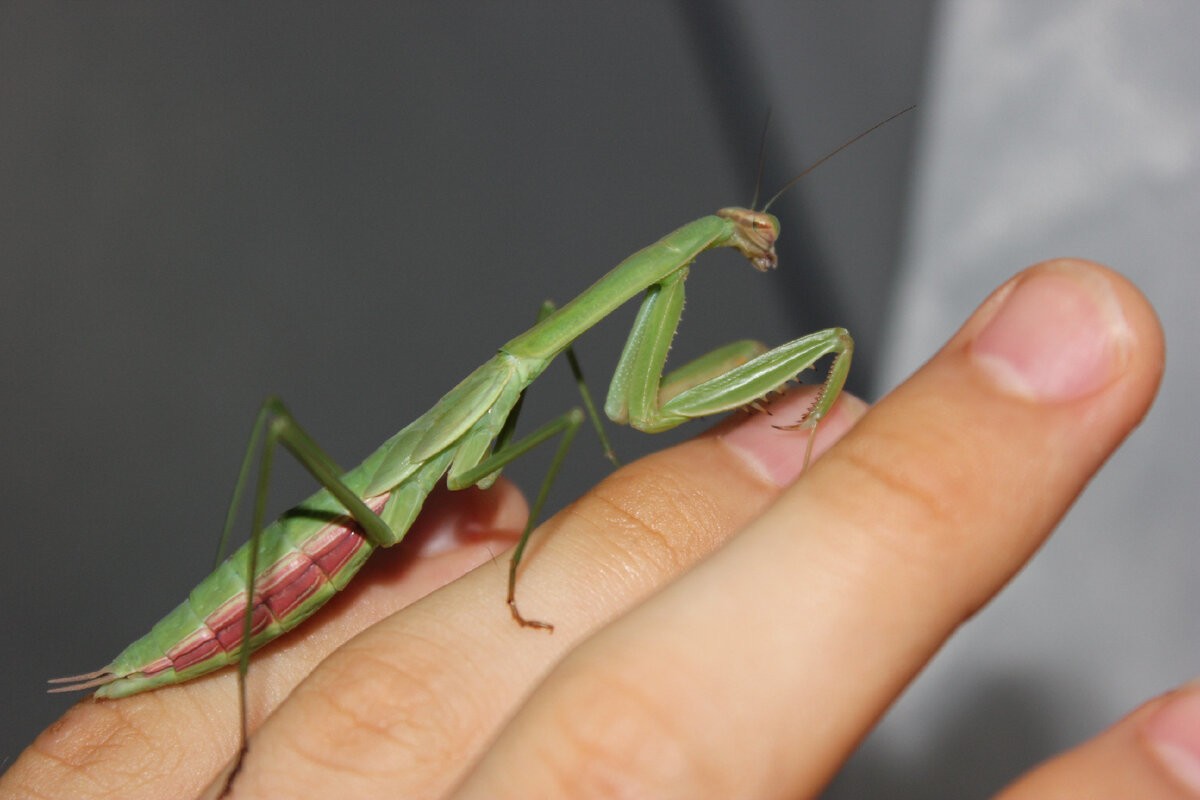
Tenodera sinensis or Chinese bowing mantis is an insect, active mainly at night. The insect reaches a length up to 15 cm. The Chinese praying mantis is common in China, Korea, Japan, Thailand and Micronesia. In 1895 it was introduced to the Northern America in the vicinity of Philadelphia, (Pennsylvania for the purpose destruction of harmful insects, from there it is quite rapidly settled in the eastern regions of the continent. Since the mid 70s of the last century, this species has gained popularity as a home pet.
The diet of an insect consists mainlym of insects though adults females can sometimes eat vertebrates - small reptiles and amphibians (in some sources it is noted that they hunt hummingbirds). Like some other praying mantises, representatives of this species prone to cannibalism.
lumberjack titan 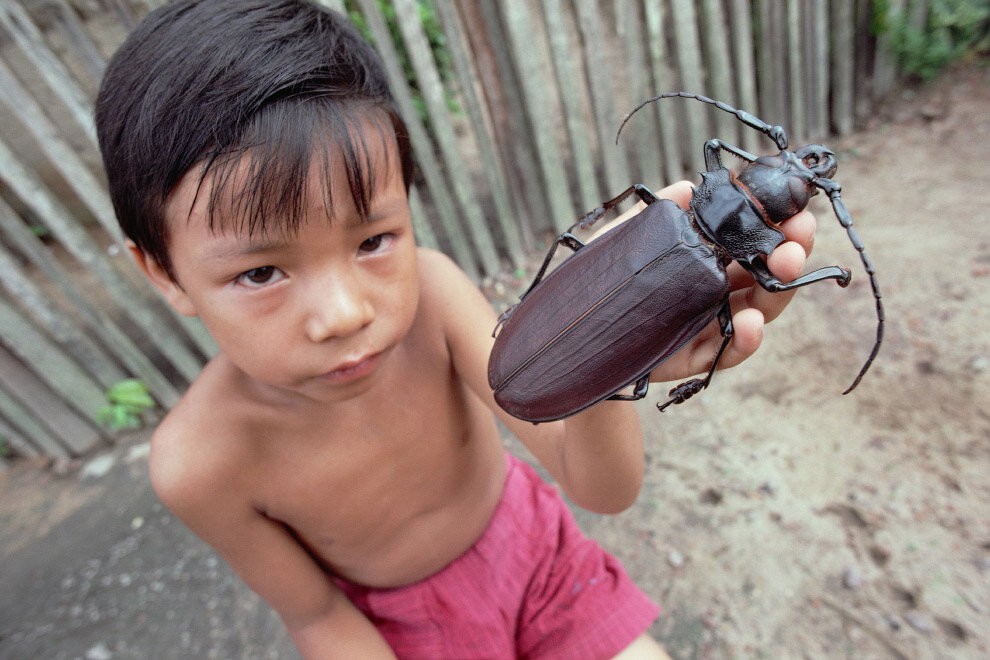
An insect of incredible size for its class belongs to mustachioed family. An adult over the period of life can reach impressive size: about 17 cm long and about 8 cm wide. He is with difficult to fit in the palm of an adult. True, such characteristics are rare. Strong insect jaws located on the head, they can easily bite a small rod. The woodcutter titan uses his main weapon deftly for defense.
Oddly enough, having such an impressive size, the beetle does not feed on anything and uses the energy reserves that he managed to accumulate at the larval stage. An interesting fact is that no one ever I saw how the larva of the titan beetle grows and develops. Exists the assumption that it receives its formation in decaying roots trees, where it reaches an impressive size in length.
Peacock-eye atlas 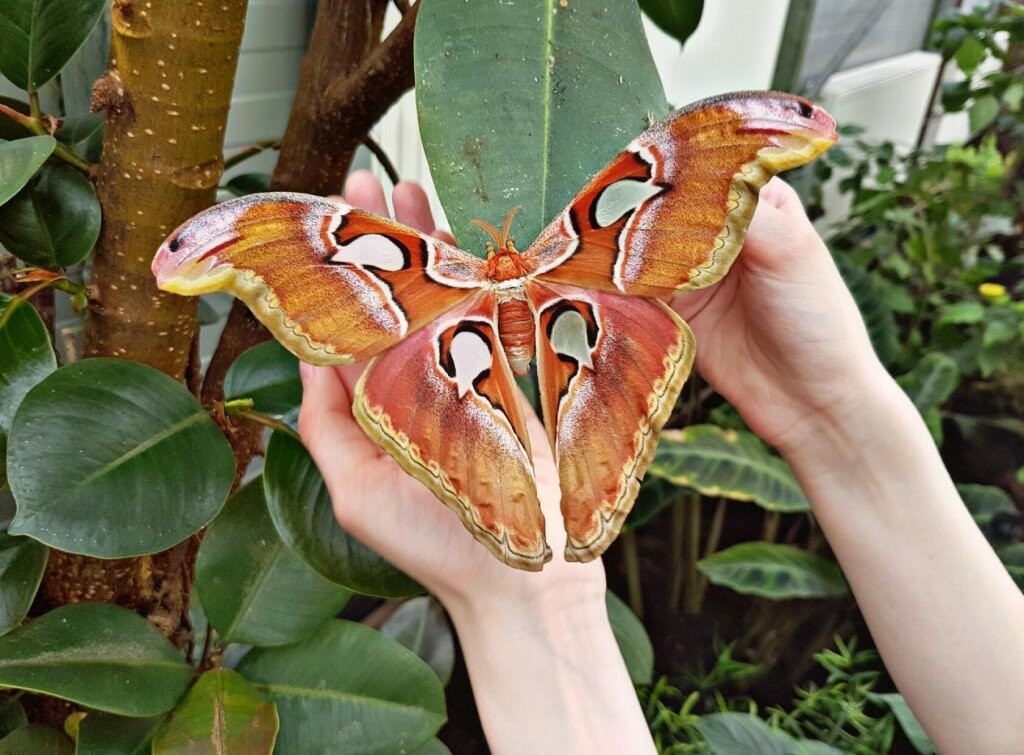
Butterfly peacock-eye atlas is one of the largest in the world. Its wingspan is about 24 cm. It is found in subtropics of Southeast Asia, Indonesia, Thailand, southern China, Malay archipelago. In addition to size, the giant beauty has more one unique feature - a completely atrophied mouth. On the throughout her short (1-2 weeks) life, she does not eat anything, but recycles fat reserves accumulated while still being a caterpillar.
The whole life of these beautiful creatures is dedicated exclusively to reproduction. On the very first evening after leaving the pupa, the male goes in search of a female. The female, emerging from the pupa, motionless sits waiting for the male, and is able to wait for him in this way for several days. Mating lasts several hours. The next evening after mating, the female starts laying eggs. Egg laying continues for several nights, immediately after its completion, the female dies.








